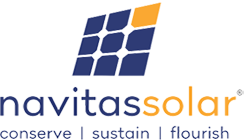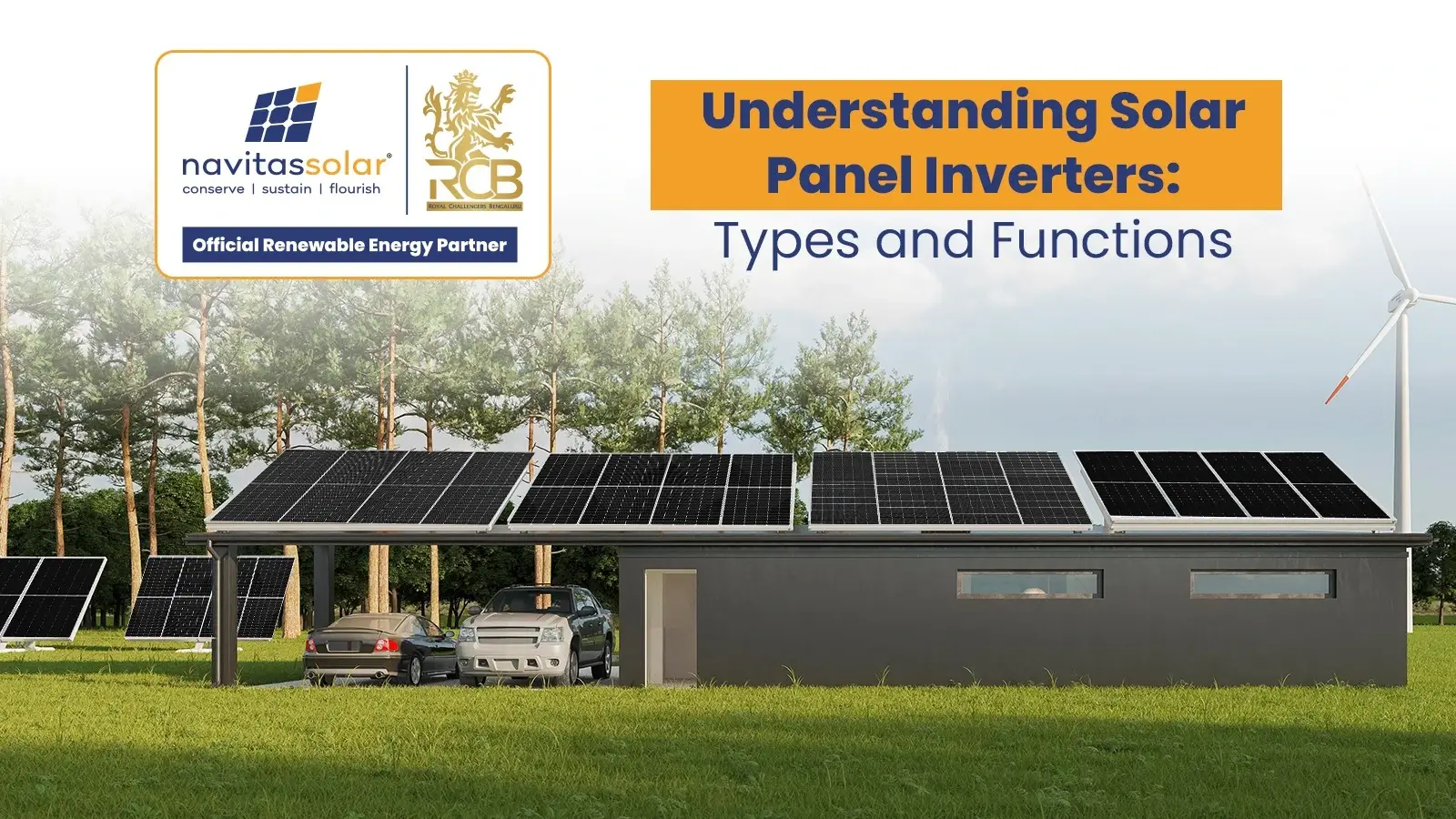Understanding Solar Panel Inverters: Types and Functions
The growth of the solar power industry in the past decades has been tremendous and is expected to grow by over 6% CAGR by 2032 (source).
Producing solar power takes a sophisticated system, and a solar panel inverter is integral to that system. So, the solar panel inverter industry is also thriving with the growing solar panel industry with a 7.7% CAGR till 2032 (source).
Therefore, solar power stock prices have shot up signifcantly. We will discuss the types and functions of solar panel inverters. First, let’s look into the basics of how solar panel inverters work.
Table of Contents
ToggleWhat is a Solar Panel Inverter?
Any solar panel has silicon PV cells, which convert sunlight into electric energy. Solar panels produce electricity in DC form. While DC (Direct Current) is great for transferring electricity, you need AC (Alternating current) to use it in your home. That’s where inverters come in. Its job is to convert DC into AC. The solar panel inverter is placed near the house or a scheduled place where it is safe.
Now, what is DC and AC electricity? In simple terms, DC is when the current only fows in one direction. Therefore, you can boost the amount of electricity transferred at the moment, save any electricity lost, and save time in transferring the electricity. However, it is not suitable for home appliances. Therefore, they use AC electricity, where the fow of electricity reverses in periodic time.
The solar panel inverter is the middle point where the solar panel connects with the home’s electric system. The inverter receives the DC from the solar panel and converts it to AC before passing it to the home/ offce electric system. Additionally, in the case of an on-grid solar panel system, the inverter is also connected to the grid system. Thus, you can pull electricity from it or transfer your excessive electricity for net metering. It is also connected to the battery that stores the DC electricity produced by the solar panel system.
Why is an Inverter Necessary in Solar Power Plants?
The use of the inverter is more than just converting DC to AC. The following are the few functions that make solar panel inverters crucial in the solar system setup.
- To convert current from DC to AC
Let’s start with the one that we talked about earlier. The DC electricity produced by the solar panel is useless to us. Therefore, you need an inverter, a solar panel inverter to be specific, to convert it to AC.
- To monitor the performance of solar panel
The solar panel inverter comes with a monitor which shows how much electricity is inverted. It helps you understand the performance of the solar panels. The amount of DC received from the solar panel enables you to understand if there is any problem with solar panels.
- To connect the solar system with the grid system
In addition to saving electricity bills, solar panels also help you make money. The solar panel inverter connects with the local utility provider’s grid. Therefore, you can sell the excessive electricity produced by your system in exchange for a bonus or money. Furthermore, it helps you create a backup for when the panel can’t produce enough electricity. The inverter enables you to pull electricity from the grid.
- To optimize the solar panel efficiency
Multiple solar panels produce electricity at different levels due to factors like light exposure, shadowing of panels, and more. It can affect the overall output of the solar system. Therefore, many inverters (power optimizer inverters) help you optimize the solar panel’s performance to improve production.
- To safeguard your electric system
The solar panel inverter has a system to stop the current flow in case of a short circuit or overvoltage.
Types of Solar Panel Inverter
We can use three classic solar panel inverters in our homes.
- String Inverters
The string inverter is a classic, trusted for decades. It is like a centralized air conditioner system. Here, a string is attached to all the solar panels, through which the electricity travels to the inverter box. They function best when all the panels face the same direction with no overshadowing from any structure nearby. Note that if one solar panel has a defect, it will impact the total output.
Advantages of String Inverter:
- Easy management of the solar panel
- Low-cost solar panel inverter
- Best for open areas for solar panels Disadvantages of String Inverter:
- You can’t monitor the output of solo solar panel
- If one solar panel fails, the whole system gets affected
- It can’t operate well in areas with more shades
- Microinverters
Microinverters give you access to individual solar panels. These micro-inverters are directly attached to individual solar panels, converting electricity and transferring it to the system’s main supply line. It helps you monitor each panel and also get better efficiency. Although the installation cost is higher, it enables you to get the best solar panel, irrespective of its position or shading.
Advantages of Microinverter:
- Monitor the performance of each solar panel
- Optimize the effciency of the solar panel
- Reduces the impact of solar panels shadowing Disadvantages of Microinverter:
- Higher installation cost
- Not of great use in open areas
- Power Optimizer
The power optimizer is the balance of string and micro-inverters. The optimizer is a device connected to a single solar panel. The optimizers then get connected to the centralized solar panel inverter. As the name suggests, the optimizer optimizes the solar panel’s output to match the other panels’ production. So, the output electricity fow and voltage are harmonious. Thus, you can get consistent voltage even if a solar panel produces less production due to shadowing or other issues.
Advantages of Power Optimizer:
- Monitor individual solar panel
- Increased effciency of the solar panel
Disadvantages of Power Optimizer:
- Higher installation cost
- Not of great use in open areas
Cost of Solar Panel Financing
Solar panel fnancing includes many factors. A few of them are:
- Solar panel price
- Installation cost
- Tax payable on the installation
- Solar panel inverter cost
- Maintenance costs
- Permits and certificate costs
However, government subsidies and tax benefts reduce the solar panel fnancing needed. Navitas Solar can help you get the best solar panel installation offers, subsidies, and tax benefts. We are one of Surat’s best solar panel manufacturers, providing end-to-end services PAN India.
Conclusion
You’ll need a solar panel inverter to get the best solar panels. The solar panel inverter converts the DC electricity produced by the solar panel into AC used in our home appliances. The inverter helps you monitor and boost solar panel effciency, connect the solar panels with the local grid, and safeguard the solar power system.
FAQ
Do I need a battery for the solar panel inverter?
A battery stores excessive electricity produced by the solar panels. If you want to have a backup, you can install a battery. However, if you do not want to store the electricity produced, skip it and stick to the inverter only.
How do I choose the right solar panel inverter?
While selecting the solar panel inverter, you must consider the solar panel location, the effciency you desire, and the budget you have for solar panel installation. An expert like the ones at Navitas Solar can help you understand your needs and the best possible solar panel inverter for your project.
String inverter vs microinverter: which is best?
Both string and micro inverter have their pros and cons. If you have no blockage that shadows the solar panel, you can easily use the string inverter as an affordable solution. However, if you need more control over the solar panel performance and do not want to worry about the shadowing and budget, you can choose microinverters.


 Online | Privacy policy
Online | Privacy policy
Related Posts
You May Also Like
Bonito Series: Driving Innovation in…
Read MoreTOPCon Series: The Next Generation…
Read MoreValuable Points to Remember During…
Read MoreNavitas Planet Partners with Hysolwin…
Read MoreDriving Towards a Sustainable Future:…
Read MoreWhy Do Top-Grade EVA Sheets…
Read MoreBonito Series: Driving Innovation in…
Read MoreTOPCon Series: The Next Generation…
Read MoreValuable Points to Remember During…
Read MoreNavitas Planet Partners with Hysolwin…
Read MoreDriving Towards a Sustainable Future:…
Read MoreWhy Do Top-Grade EVA Sheets…
Read MoreBonito Series: Driving Innovation in…
Read MoreTOPCon Series: The Next Generation…
Read MoreValuable Points to Remember During…
Read MoreNavitas Planet Partners with Hysolwin…
Read More